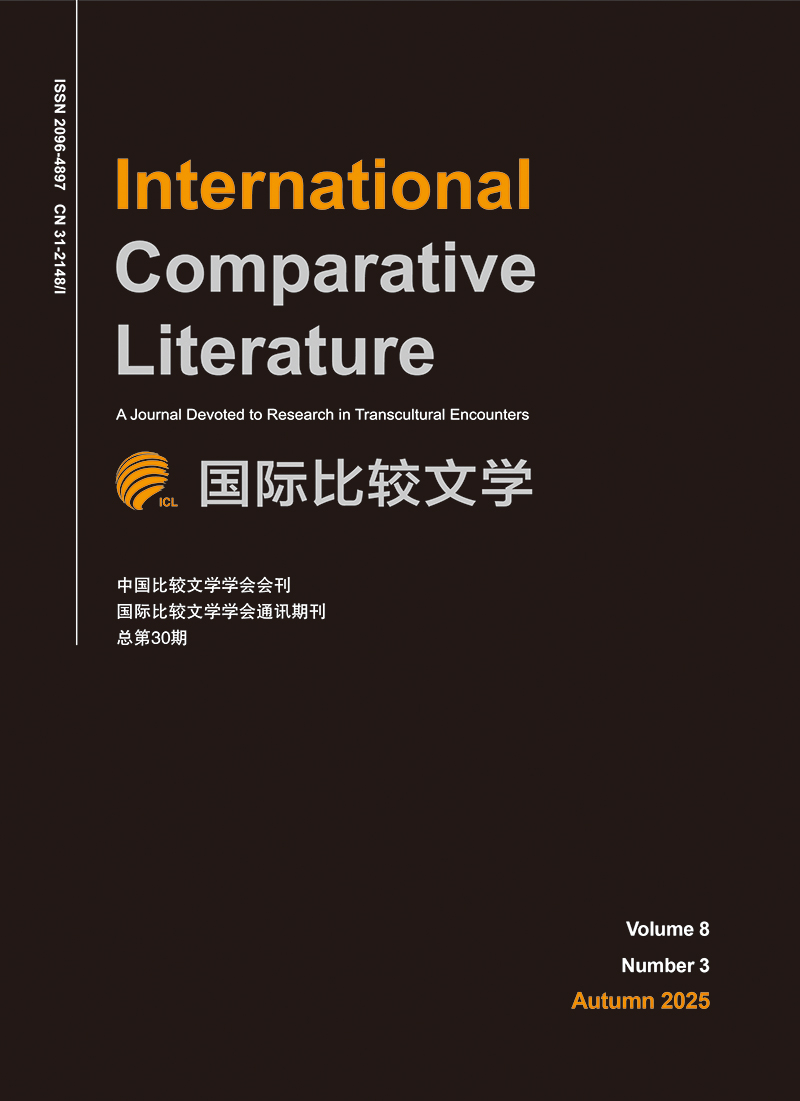The Fold and the Baroque
-
摘要: 德勒兹借用莱布尼茨的“单子”思想,发展出了“褶子”思想。莱布尼茨认为作为单一实体的单子组成了复合的东西,单子是没有广延的。莱布尼茨的动力论和视角主义思想,在德勒兹的褶子思想中得到了进一步的阐发。褶子不仅是单子内部的折叠,而且是单子与单子之间的折叠,这是外部的折叠。褶子不断延伸,延伸不是褶子的消亡,而是褶子的不断变化。正是在这里,德勒兹找到了巴洛克与褶子的共同点,并用褶子定义了巴洛克。巴洛克与本质无关,而是与运作功能和特点相关,它不停地制造褶子。褶子和巴洛克的关键在于弯曲,弯曲才是核心,弯曲在不断地生成。褶子的弯曲特点在巴洛克艺术中不仅使得绘画作品的画面充满流动性和活力,而且令巴洛克风格的建筑带给观者强烈的视觉冲击力。巴洛克艺术作品中的光线则体现出了褶子的折叠特性。光、影的折叠关系,不仅使画面具有空间感,也象征着灵魂和身体的折叠。最后,德勒兹认为,每个单子都从一个不同的侧面展现了宇宙,这种观点是一种从中心到视点的转化,因此不存在中心和边缘之分,这构成了巴洛克艺术的新和谐。Abstract: Deleuze borrowed Leibniz's concept of the "monad" in developing his own concept of the "fold." Leibniz presented the monad as a simple substance that constitutes composites and has no extension. The dynamics and perspectivism of monads are further elaborated in Deleuze's thinking on folds. The fold is not only a folding within the monad, but also a folding between monads, which is external.The fold is constantly extended, and extension does not signal the demise of the fold, but rather its constant changing. It is here that Deleuze finds common ground between the Baroque and folds, and he uses folds to define the Baroque. The Baroque refers not to an essence but rather to an operative function, to a trait:it endlessly produces folds. The key to folds and the Baroque is the bend:the bend is the core, and is constantly being generated. The bending characteristic of folds in Baroque art not only lends fluidity and vitality to paintings, but also strengthens Baroque architecture's visual impact on the viewer. The light in Baroque artworks reflects the folding characteristics of folds. The folding relationship of light and shadow not only gives the picture a sense of space, but also symbolizes the folding of the soul and body. Finally, Deleuze believes that each monad shows the universe from a different side. This view is a transformation from center to point of view, which erases the distinction between the center and the edge, constituting the new harmony of Baroque art.
-
[1] Conley,Tom."Folds and Folding." In Gilles Deleuze:Key Concepts.Edited by Charles J.Stivale.London and New York:Routledge,2011,192-203. [2] Deleuze,Gilles.Difference and Repetition.Translated by Paul Patton.New York:Columbia University Press,1994. [3] ——.Negotiations.Translated by Martin Joughin.New York:Columbia University Press,1994. [4] ——.The Fold:Leibniz and the Baroque.Translated by Tom Conley.London:The Athlone Press,1993. [5] Frichot,Helene."Stealing into Gilles Deleuze's Baroque House." In Deleuze and Space.Edited by Ian Buchanan and Gregg Lambert.Edinburgh:Edinburgh University Press,2005,61-79. [6] Laerke,Mogens."Four Things Deleuze Learned from Leibniz." In Deleuze and The Fold:A Critical Reader.Edited by Sjoerd van Tuinen and Niamh McDonnell.New York:Palgrave Macmillan,2010,25-45. [7] Leibniz,G.W.Philosophical Essays.Edited and Translated by Roger Ariew and Daniel Garber.Indianapolis &Cambridge:Hackett Publishing Company,1989. [8] (德)费尔巴哈:《对莱布尼茨哲学的叙述、分析和批判》,涂纪亮译,北京:商务印书馆,1985年。[Feuerbach,Ludwig.Dui Laibunici zhexue de xushu,fenxi he pipan(Exposition,Analysis and Critique of the Philosophy of Leibnitz).Translated by TU Jiliang.Beijing:The Commercial Press,1985.] [9] 高宣扬:《当代法国思想五十年》,北京:中国人民大学出版社,2005年。[GAO Xuanyang.Dangdai Faguo sixiang wushinian(Fifty Years of Contemporary French Thought).Beijing:China Renmin University Press,2005.] [10] (瑞士)海因里希·沃尔夫林:《文艺复兴与巴洛克》,沈莹译,上海:上海人民出版社。[Wolfflin,Heinrich.Wenyifuxing yu baluoke(Renaissance and Baroque).Translated by SHEN Ying.Shanghai:Shanghai People's Press,2007.] [11] 江畅:《自主与和谐》,武汉:武汉大学出版社,2005年。[JIANG Chang.Zizhuyu hexie(Autonomy and Harmony).Wuhan:Wuhan University Press,2005.] [12] (德)莱布尼茨:《人类理智新论》,陈修斋译,北京:商务印书馆,1982年。[Leibniz,G.W.Renlei lizhi xinlun(New Essays on Human Understanding).Translated by CHEN Xiuzhai.Beijing:The Commercial Press,1982.] [13] 杨凯麟:《分裂分析德勒兹》,开封:河南大学出版社,2017年。[YANG Kailin.Fenlie fenxi Delezi(Schizo-analyse de Gilles Deleuze).Zhengzhou:Henan University Press,2017.] -

 点击查看大图
点击查看大图
计量
- 文章访问数: 975
- HTML全文浏览量: 146
- PDF下载量: 26
- 被引次数: 0



 下载:
下载:

